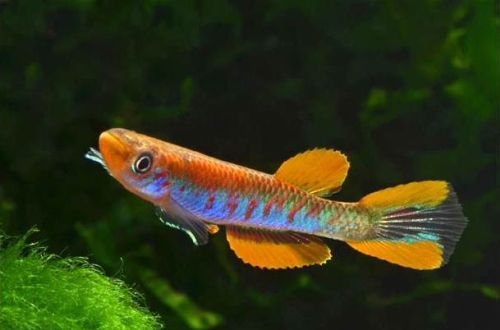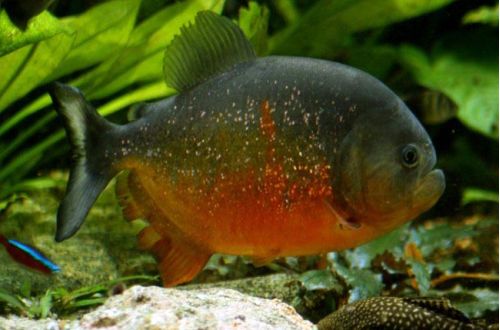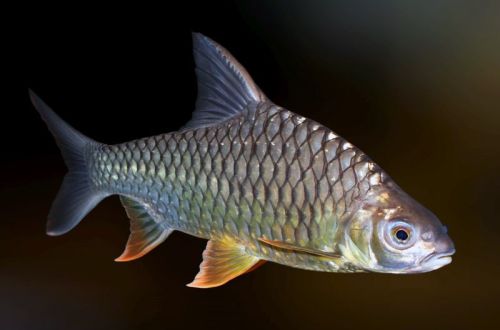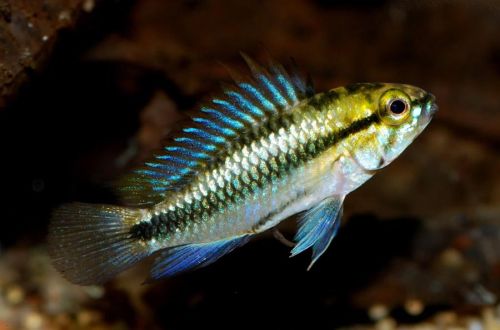
Afiosemion Mimbon
Afiosemion Mimbon, scientific name Aphyosemion mimbon, belongs to the family Nothobranchiidae (Notobranchiaceae). Bright colorful little fish. Relatively easy to keep, but breeding is fraught with difficulty and is hardly within the power of novice aquarists.

Contents
Habitat
The fish is native to equatorial Africa. The natural habitat covers northwestern Gabon and southeastern Equatorial Guinea. Inhabits numerous forest streams flowing under the canopy of tropical forest, lakes, puddles. A typical biotope is a shallow shaded reservoir, the bottom of which is covered with a layer of silt, mud, fallen leaves mixed with branches and other snags.
Brief information:
- The volume of the aquarium – from 40 liters.
- Temperature – 18-22°C
- Value pH — 5.5–6.5
- Water hardness – soft (1-6 dGH)
- Substrate type – any
- Lighting – subdued
- Brackish water – no
- Water movement – little or no
- The size of the fish is 5–6 cm.
- Meals – any rich in protein
- Temperament – peaceful
- Keeping in a group of 4-5 individuals
Description
Adults reach a length of 5–6 cm. Males are slightly smaller than females, and are brighter in color. The color is dominated by orange, the sides have blue hues. Females look noticeably more modest. The main color is pinkish with red dots.
Food
Omnivorous species. The daily diet may include dry, frozen and live foods. The main condition is a protein-rich diet.
Maintenance and care, arrangement of the aquarium
Not suitable for large aquariums. Optimal habitat is provided in small tanks (20-40 liters for 4-5 fish) with dense aquatic vegetation, including floating, dark soft ground and subdued lighting. A good addition would be the addition of the leaves of some trees to the bottom, which, in the process of decomposition, will give the water a brownish color and increase the concentration of tannins, which is typical of the natural habitat of fish. More details in a separate article “The leaves of which trees can be used in an aquarium.” A simple airlift filter is suitable as a filtration system. Aquarium maintenance consists of standard procedures: weekly replacement of part of the water with fresh water, removal of organic waste, equipment maintenance, etc.
Behavior and Compatibility
Males exhibit territorial behavior. It is desirable to maintain the size of the group consisting of several females and one male. It is worth noting that females are also not very friendly and may be aggressive towards males. Similar behavior is observed if the fish were placed in the aquarium at different times and did not live together before. Peacefully tuned to other fish. Because of possible conflicts, it is worth avoiding combining with representatives of related species.
Breeding / breeding
In nature, the breeding season is associated with alternating dry and wet seasons. When the amount of precipitation decreases, the fish begin to lay eggs in the upper layer of soil (silt, peat). Spawning takes several weeks. Usually, in the dry season, the reservoir dries up, fertilized eggs remain in moist soil for up to two months. With the advent of rains and as the reservoir fills, fry appear.
A similar feature of reproduction complicates the breeding of Afiosemion Mimbon at home, since it involves long-term storage of eggs in a dark place in a moist substrate.
Fish diseases
Suitable living conditions minimize the likelihood of a disease outbreak. The threat is the use of live food, which is often a carrier of parasites, but the immunity of healthy fish successfully resists them. Read more about symptoms and treatments in the Aquarium Fish Diseases section.





